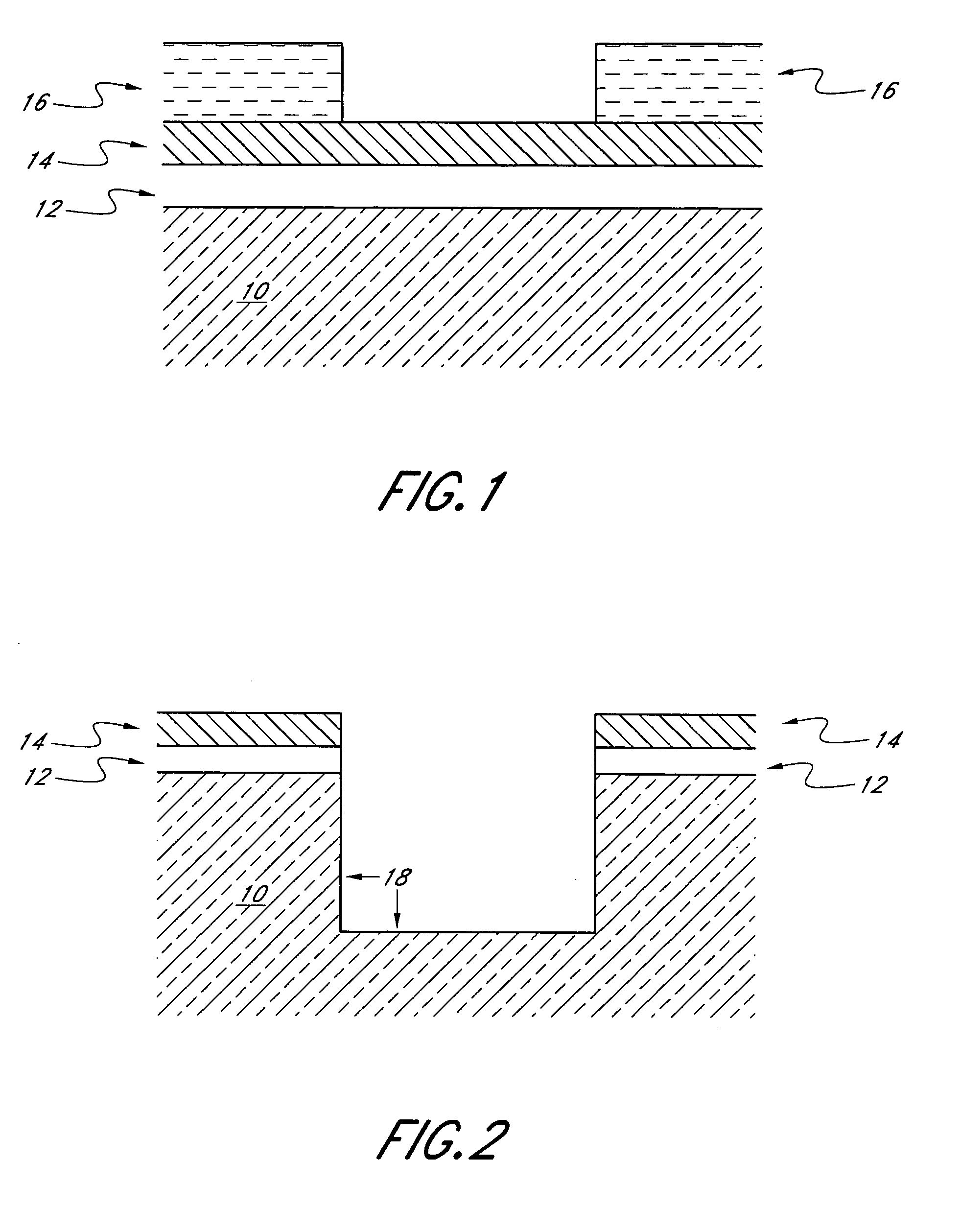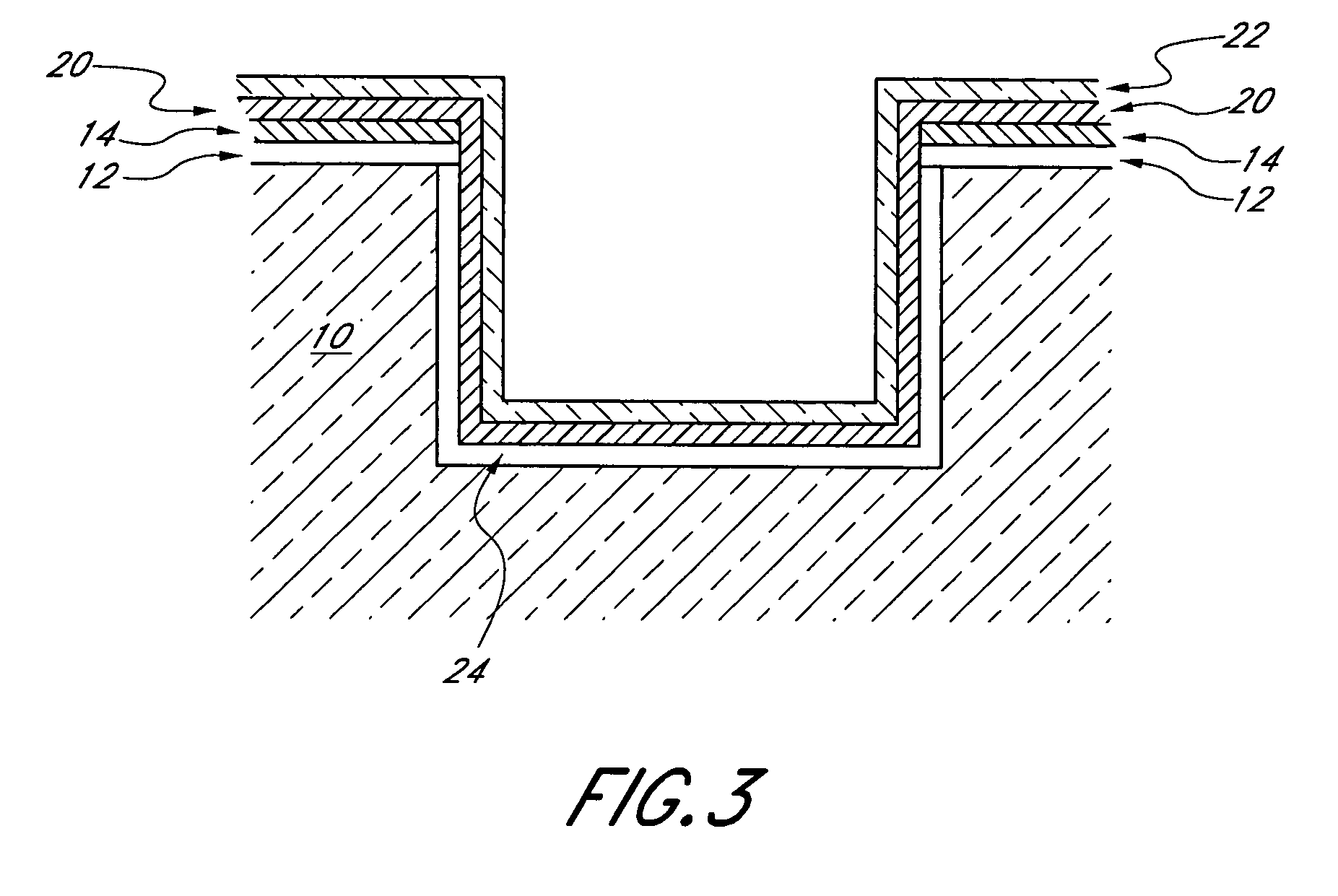Sub-micron space liner and densification process
a space liner and sub-micron technology, applied in the direction of semiconductor/solid-state device manufacturing, basic electric elements, electric apparatus, etc., can solve the problems of increasing scaling difficulty for integrated circuit manufacturers, increasing the difficulty of filling these trenches with oxide, and pinching at the upper corners
- Summary
- Abstract
- Description
- Claims
- Application Information
AI Technical Summary
Benefits of technology
Problems solved by technology
Method used
Image
Examples
Embodiment Construction
[0022]Bulk density of spin-on dielectric (SOD) materials can be achieved in sub-micron spaces, such as isolation trenches, through the use of a liner material that expands irreversibly when oxidized. In the illustrated embodiments described below, after a trench is formed, the sidewalls of the trench are oxidized, and a nitride layer is deposited to protect the active area of the trench. An expandable liner is deposited over the nitride liner before the trench is filled with a dielectric material. When the dielectric material is densified, the liner expands. The dielectric material reduces in size significantly as the material is densified. The expanding liner serves to evenly compress the dielectric material. In this manner, the combination of the liner and the densification process yields excellent bulk density in sub-micron spaces.
[0023]The liner material is preferably easily deposited in small spaces and irreversibly expanded when oxidized. In a preferred embodiment, the liner i...
PUM
| Property | Measurement | Unit |
|---|---|---|
| temperature | aaaaa | aaaaa |
| temperature | aaaaa | aaaaa |
| temperature | aaaaa | aaaaa |
Abstract
Description
Claims
Application Information
 Login to View More
Login to View More - R&D
- Intellectual Property
- Life Sciences
- Materials
- Tech Scout
- Unparalleled Data Quality
- Higher Quality Content
- 60% Fewer Hallucinations
Browse by: Latest US Patents, China's latest patents, Technical Efficacy Thesaurus, Application Domain, Technology Topic, Popular Technical Reports.
© 2025 PatSnap. All rights reserved.Legal|Privacy policy|Modern Slavery Act Transparency Statement|Sitemap|About US| Contact US: help@patsnap.com



